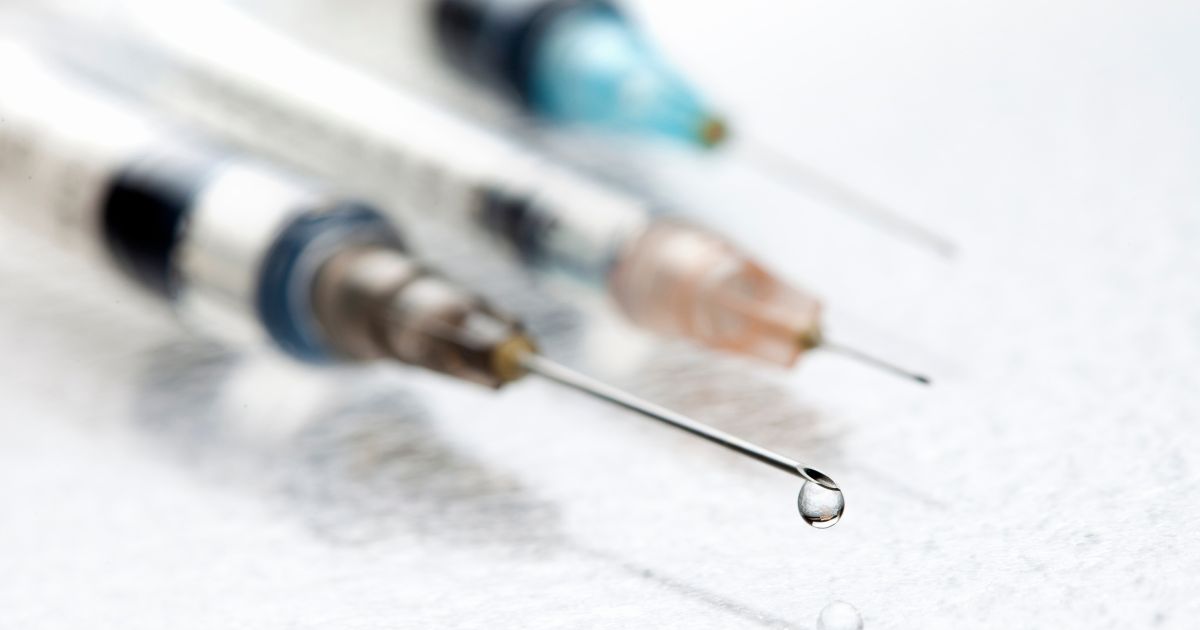A needlestick injury is a probable hazard for those who work in the medical field. Though these injuries are often minor, they can still lead to life-threatening infections. In this blog post, we will explore the dangers of needlestick injuries and what you can do to stay safe.
What is a Needlestick Injury?
Needlestick injuries occur when the skin is punctured by a contaminated needle. The risk of infection is highest if the needle is carrying a virus, such as HIV or Hepatitis C. However, even needles that are contaminated with common bacteria can cause serious infections.
Needlestick injuries are most commonly caused by needles that are used to inject drugs. They can also occur when handling sharp objects such as knives or razor blades. In some cases, needlestick injuries have been caused by an accidental sticking with hypodermic needles that have been discarded improperly.
People can suffer needlestick injuries when they go for routine blood tests. If the medical provider does not properly handle the needle, it could become contaminated.
The best way to avoid needlestick injuries is to use good safety practices when handling sharp objects. This means always using gloves and other protective gear when handling needles and other sharp objects and ensuring that used needles are disposed of properly.
What is Complex Regional Pain Syndrome?
Complex regional pain syndrome (CRPS) is a condition that causes intense pain, swelling, and changes in the skin. CRPS typically develops after an injury, like a needlestick.
The most common symptom of CRPS is intense burning pain. The pain is often out of proportion to the initial injury. Other symptoms include:
- Swelling and changes in skin color (redness or bluish discoloration)
- Skin temperature changes (warmer or cooler than usual)
- Skin texture changes (thicker or thinner than usual)
- Changes in nail and hair growth (brittleness)
- Joint stiffness and bone loss
There is no cure for CRPS, but there are treatments that can help alleviate the symptoms. Treatment options include physical therapy, medication, and surgery. In some cases, a combination of these treatments is necessary to achieve effective symptom relief.
CRPS is typically diagnosed based on the presence of certain signs and symptoms. Your doctor will likely ask about your medical history and perform a physical examination of your affected limb. They may also order tests such as X-rays, MRIs, sympathetic nervous system tests, and bone scans to rule out other conditions that could be causing your symptoms.
Can a Needlestick Injury Lead to CRPS?
A needlestick injury occurs when the skin is punctured by a sharp object, such as a needle or other sharp instrument. These injuries are common among healthcare workers who are constantly handling sharp objects. However, anyone can suffer a needlestick injury, especially if they work with tools or machines that use sharp objects, and those people who regularly get blood work done.
When compounded with an infected needle, a needlestick injury can lead to CRPS. The exact cause of CRPS is unknown, but it is believed that the condition is caused by damage to the nervous system. This damage can occur as a result of a needlestick injury, surgery, or another type of trauma to the limb. In some cases, CRPS may develop even without an obvious inciting event.
What are the Causes of Needlestick Injuries that Lead to CRPS?
There are many causes of needlestick injuries. The most common cause is accidentally puncturing oneself with a sharp object such as a needle. Other causes include being stabbed or cut with a sharp object, or having a foreign object lodged in the skin. Any of these injuries can lead to CRPS.
CRPS typically develops after an injury to the nervous system. The injury can be physical, such as a needlestick injury, or it can be psychological, such as stress. When the nervous system is injured, it sends out abnormal signals to the brain. These signals cause the body to experience pain even though there is no actual damage to the tissue.
CRPS is not always caused by an injury. In some cases, it may be caused by an underlying medical condition such as diabetes or cancer. However, the vast majority of cases are caused by an injury to the nervous system.
What to do When You Have a Needlestick Injury?
- Do not panic. It can be scary when you realize you have been stuck by a needle, but it is important to stay calm. The calmer you are, the better able you will be to make decisions and act.
- If the needle is still in your skin, try to remove it carefully with clean hands. If you cannot remove it yourself or if it is broken off in your skin, leave it in and seek medical help immediately.
- Once the needle is no longer in your skin, gently wash the area with soap and water.
- Contact your doctor or go to an emergency room as soon as possible for further evaluation and treatment. You may need to receive a series of vaccinations or take medication to prevent infection.
- Follow up with your doctor or healthcare provider for any recommended tests or additional shots.
What Is Medical Malpractice?
Medical malpractice is defined as negligence on the part of a healthcare professional that leads to injury or death. To win a medical malpractice case, you will need to prove:
- The health care professional owed you a duty of care
- They breached that duty of care by improperly handling a needle
- Their breach of duty caused you an injury
If you can prove these items, you will be on your way to proving a medical malpractice claim. However, you will also need to show that the injury resulted in damages, such as lost wages or medical bills, including CRPS treatment.
Needlestick Injuries and Medical Malpractice
Needlestick injuries can occur when health care professionals fail to follow proper safety protocols when using needles. For example, if a nurse does not change their gloves after using a needle on a patient with an infectious disease, and then uses that same needle on another patient, the second patient could contract the disease.
If you have contracted an infection as a result of a needlestick injury, you may be able to file a medical malpractice claim. You will need to show that the health care professional breached their duty of care by failing to follow proper safety protocols, and as a result, you contracted an infection.
Filing a Medical Malpractice Claim
If you think you have grounds for a medical malpractice claim, the first step is to find an experienced medical malpractice lawyer who specializes in this area of law. Your attorney will help investigate your case and gather evidence to support your claim.
It is important to note that there is usually a time limit for filing claims, so you must act quickly. If you do not file your claim in time, you may not be able to collect compensation for your injuries. This could result in you having to pay out of pocket for your CRPS treatment, adding financial hardship to your list of injuries.
A Dayton Medical Malpractice Lawyer at Wright & Schulte LLC Can Help You Get the Support You Need
When your accident was caused by someone else, you may be able to seek compensation from them for your car damage and your injuries. Speak with an experienced Dayton medical malpractice lawyer at Wright & Schulte LLC today to learn your options. Contact us to schedule your free consultation by calling us at 937-222-7477 or contact us online. From our offices in Dayton, Ohio, we serve clients in Dayton, Cincinnati, Columbus, Cleveland, Centerville, Toledo, Youngstown, and Miamisburg.



